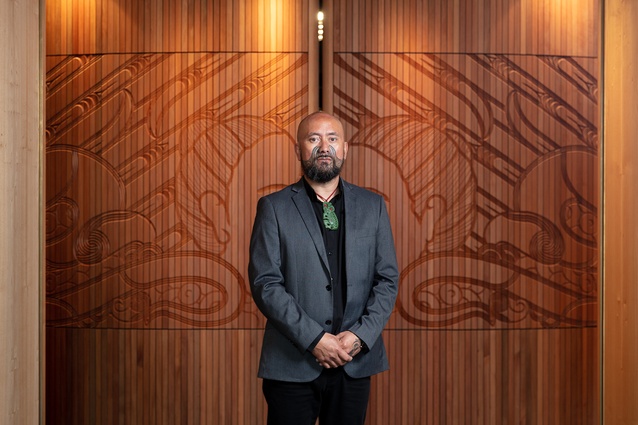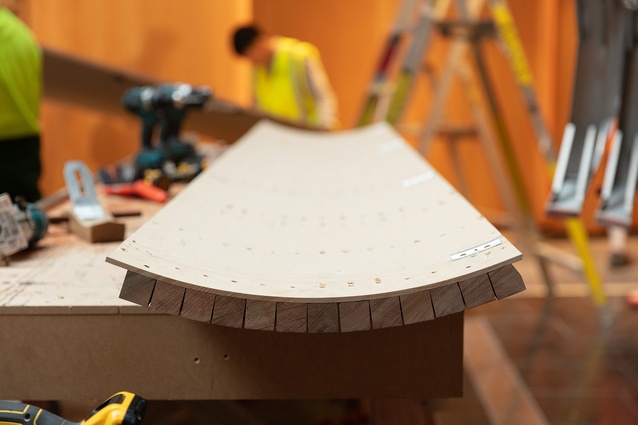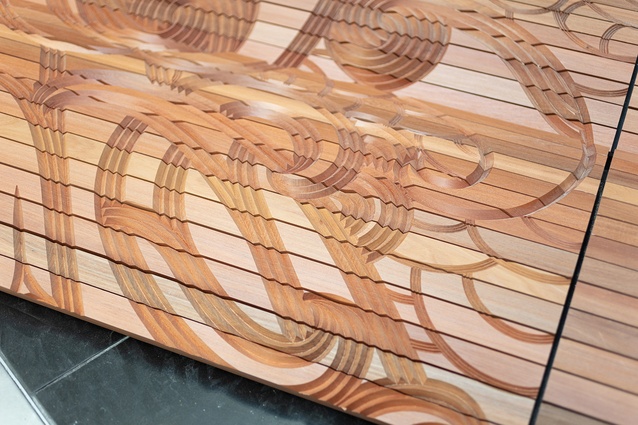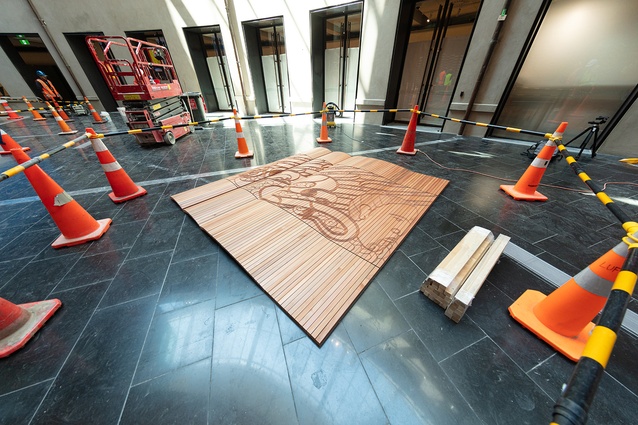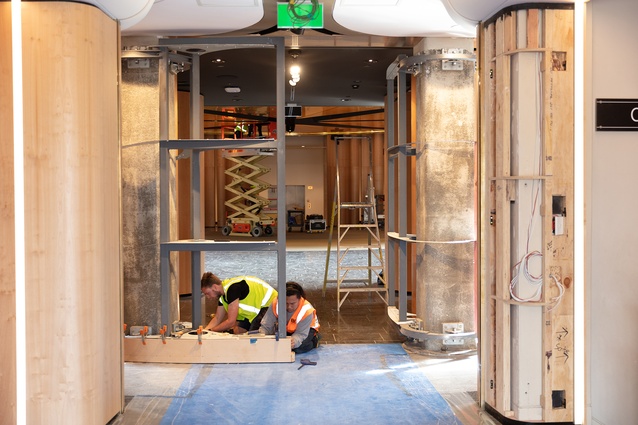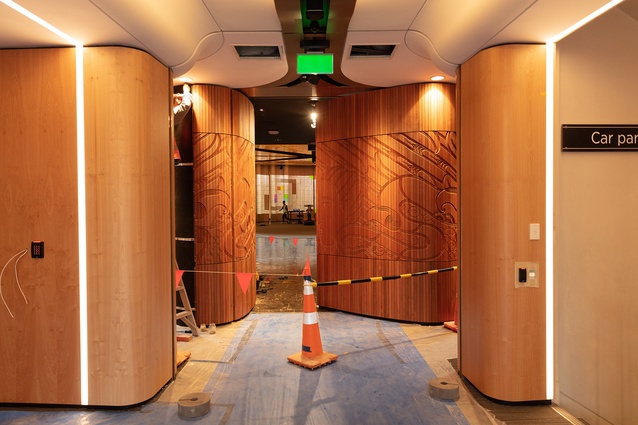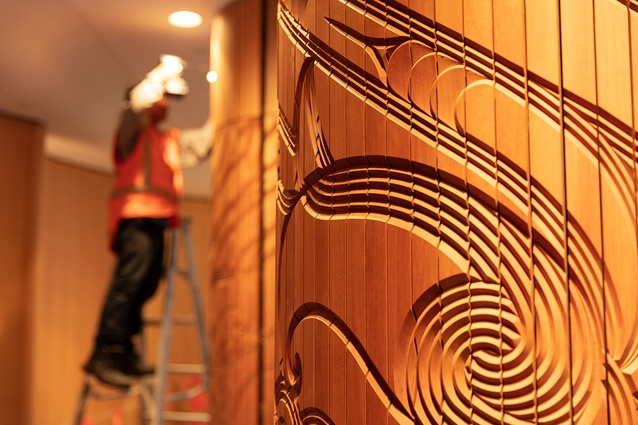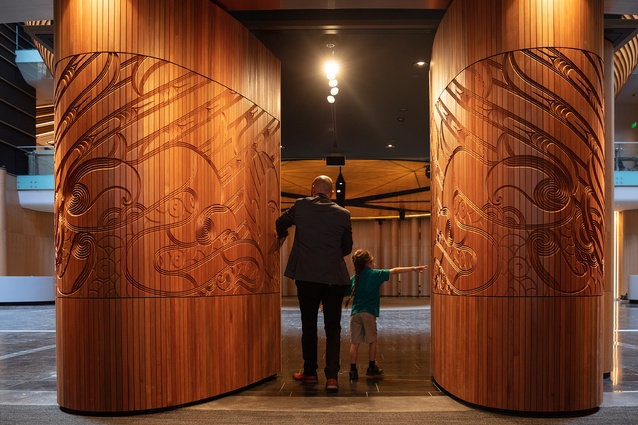Behind the Object: Te Tatau Kaitiaki
Te Tatau Kaitiaki is a Graham Tipene (Ngāti Whātua, Ngāti Hine, Ngāti Manu, Ngāti Kahu, Ngāti Haua) work that graces the entrance to the new South Atrium of the Auckland Museum. Te Tatau Kaitiaki means Guardians of the Gateway. The two “fins” pivot open and closed, acting as doors and creating one image as the come together of two wahine, “our first guardians in the womb”, in a hongi, Tipene explains.
We first saw the work as the carvings in the salvaged tōtara were being CNC routed at the Finework studio in Auckland, and saw them come to life as the South Atrium opened in early December. The finished works are physically and metaphorically imposing, steeped in Tipene’s own story of his mother and grandmother.
I asked Tipene how the idea came about for the design of this piece. Once commissioned, the idea came to Tipene of “the Museum being a kaitiaki/guardian of taonga and the connection to wahine and the way women are the guardians of our unborn children”, he says. “I reflected on how my mother was unable to have her own babies and through adoption became a mother to me and a guardian to so many others. Her grandmother raised her and instilled the values of kaitiakitanga into my mother. I started to draw with this in mind.”
The work blends traditional Māori design and concepts with a modern fabrication technique using digital carving. “My original idea was backlit, CNC-routed perspex,” Tipene explains, “But after months of kōrero and tests in routed veneer board, we came to the final product. The sourcing of the timber was key and collectively we agreed this was the best way forward. Historic korero from the Mangakahia Valley and the Ngāti Whātua connection to that area made this choice a no brainer.”
Perhaps we will see more and more of this blending of old and new. Tipene notes that “it’s an evolution of the creative process.” It fits with the theme of the rest of the Auckland Museum, which has added the modern South Atrium to the historic north side of the building.
“Traditional techniques will forever be at the heart of the work but my job is to push boundaries,” Tipene says. “I look at what we haven’t done and do that. Then repeat. I make what’s hard, easy. Then find something else hard.”
Watch below as Tipene explains more about the story behind Te Tatau Kaitiaki and learn more about the new South Atrium at the Auckland Museum here.

